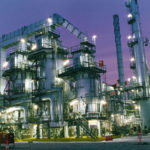When Nehru became the first Prime Minister of India, he undertook a number of measures to support India’s import substitution policies that helped set up the base for India to eventually become export-oriented under Manmohan Singh.

One such measure was setting up the chemical industry. Characterised as heavily capital intensive with a long gestation period, the private sector of the newly minted country had little interest or resources to invest in the chemical sector. So the government set it up to sell without profits and sell basic raw materials to companies making intermediaries.
Fast forward over half a century into the present, India’s chemical industry stands at $147 billion as per its chemicals exports promotion council (Chemexil) with exports of $12 billion. India’s domestic chemical industry is the third largest in Asia, the seventh biggest in the world and growing at double digit rates.
Now compare the neighbouring country’s chemical sector with the domestic one – Pakistan’s chemical sector is less than 2 percent of the LSM with total annual revenue of less than $3 billion. India set up its first cracker facility in the 1990s and now has over 7 naphtha crackers, whereas the Pakistan Chemical Manufacturers’ Association has been struggling to get even one set up. The venture is as yet in the feasibility report stages and has been so for years.
The recently revealed budget had faintly shimmering silver linings for the chemical sector, though the benefit was limited to Lotte. There was withdrawal of custom duty in two catalysts used by the PTA industry: 11 percent for Hydrogen Bromide and 3 percent for Palladium-on-Carbon. And that was the extent of mention of the chemical sector. Last fiscal year, chemicals production fell by 2.3 percent. One of the challenges underlined by the SBP report was cheaper imports from China. Furthermore, the continued absence of a naphtha cracker plant was highlighted as one of the major reasons that hindered sector’s sustainable growth.
Almost everything used by us in everyday life has chemical products used in some part of its process. From the fertilizer used to grow the fruits and vegetables we eat, to the clothes we wear that use PTA to make polyester. Plastics are used for in the manufacturing in every form of home appliances and transport vehicles. On the manufacturing side, chemical products are used as raw materials, feed stock, or intermediaries.
Yet the chemical sector continues to be overlooked, neglected and ignored. A holistic chemical policy is required to be drawn up involving all the stakeholders to set up a sector that would benefit generations of manufacturers and consumers.




























Comments
Comments are closed.